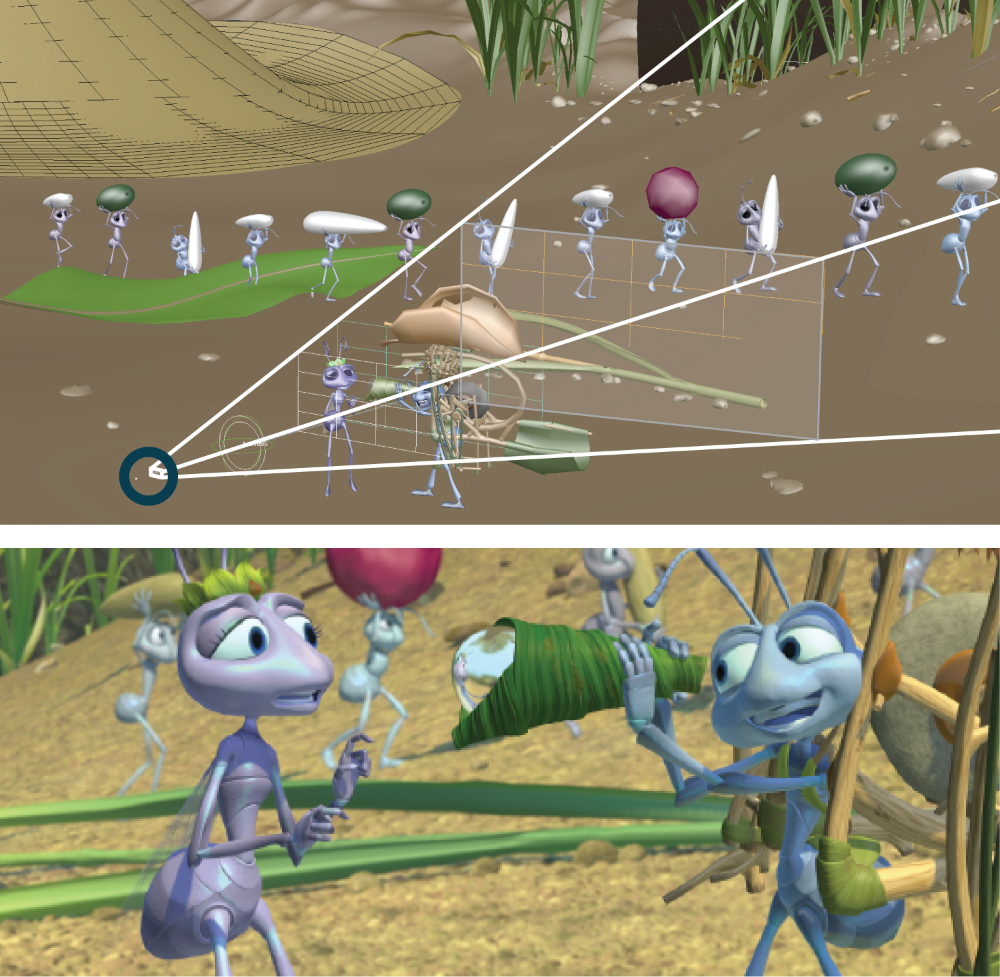

In this stage of the process, the camera angles and the basic motions of the characters are finalized.
Sets are the virtual environments in which stories take place. The setting of each scene conveys the context, story, and emotion.
Set designers are architects. They build virtual environments from the ground up. Every pebble, tree, and building helps turn the storyboards into a believable world. Some set pieces are modeled individually the same way characters are. Other sets are created procedurally with computer programs.
Cameras provide our view into the virtual 3D world. They frame each image to convey both where to look and how to feel about a scene.
Camera artists are cinematographers of the virtual world. They use virtual cameras to shape what is shown in each frame. Camera artists choose the composition, camera movement, and lens type to support the story.

Top: The camera placement (the blue circle) determines what the audience sees in this scene from A Bug’s Life.
Bottom: View from the virtual camera.

Continue to explore using Pixar in a Box, a set of lessons developed by Pixar and Khan Academy. Follow the links for lessons on Environmental Modeling, Sets and Staging, and Virtual Cameras.
Click for More